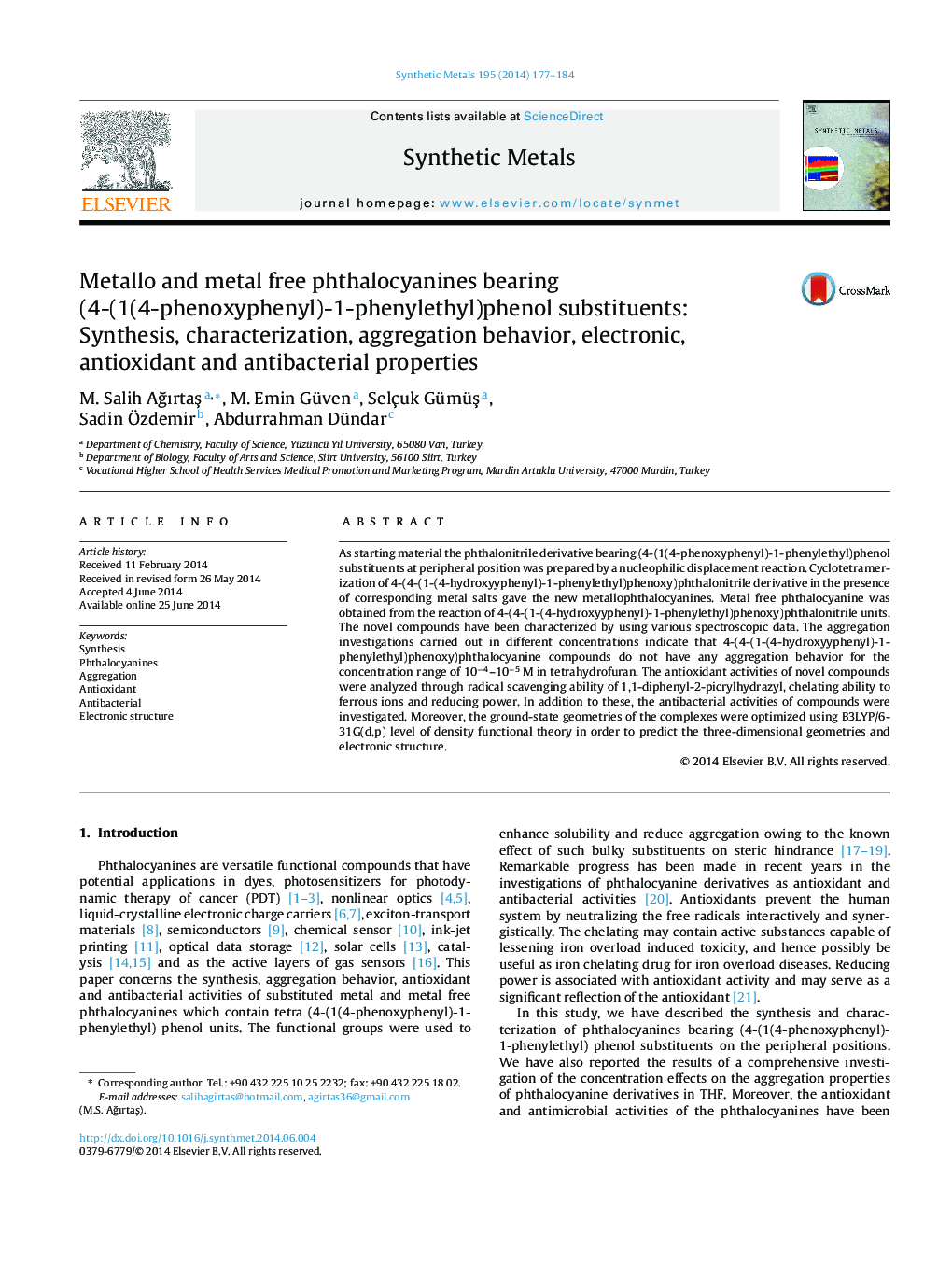| کد مقاله | کد نشریه | سال انتشار | مقاله انگلیسی | نسخه تمام متن |
|---|---|---|---|---|
| 1440942 | 1509382 | 2014 | 8 صفحه PDF | دانلود رایگان |

• Synthesis of 4-(4-(1-(4-hydroxyphenyl)-1-phenylethyl)phenoxy)phthalonitrile.
• Synthesis of new metal free and metallophthalocyanines.
• Aggregation behavior, and electronic properties.
• The antioxidant and antibacterial activities of compounds.
As starting material the phthalonitrile derivative bearing (4-(1(4-phenoxyphenyl)-1-phenylethyl)phenol substituents at peripheral position was prepared by a nucleophilic displacement reaction. Cyclotetramerization of 4-(4-(1-(4-hydroxyyphenyl)-1-phenylethyl)phenoxy)phthalonitrile derivative in the presence of corresponding metal salts gave the new metallophthalocyanines. Metal free phthalocyanine was obtained from the reaction of 4-(4-(1-(4-hydroxyyphenyl)-1-phenylethyl)phenoxy)phthalonitrile units. The novel compounds have been characterized by using various spectroscopic data. The aggregation investigations carried out in different concentrations indicate that 4-(4-(1-(4-hydroxyyphenyl)-1-phenylethyl)phenoxy)phthalocyanine compounds do not have any aggregation behavior for the concentration range of 10−4–10−5 M in tetrahydrofuran. The antioxidant activities of novel compounds were analyzed through radical scavenging ability of 1,1-diphenyl-2-picrylhydrazyl, chelating ability to ferrous ions and reducing power. In addition to these, the antibacterial activities of compounds were investigated. Moreover, the ground-state geometries of the complexes were optimized using B3LYP/6-31G(d,p) level of density functional theory in order to predict the three-dimensional geometries and electronic structure.
Figure optionsDownload as PowerPoint slide
Journal: Synthetic Metals - Volume 195, September 2014, Pages 177–184